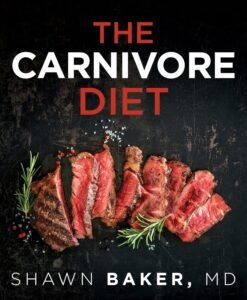
Supercharge your workouts with a carnivore diet by focusing on high-quality animal proteins and fats that fuel muscle growth and recovery. This diet enhances energy levels, supports endurance, and aids in quicker recovery times, making it ideal for athletes and fitness enthusiasts seeking optimal performance and strength.
The carnivore diet has gained significant traction as a unique approach to nutrition, emphasizing the consumption of only animal-based foods. Advocates of the carnivore diet claim numerous health benefits, from weight loss and improved mental clarity to enhanced physical performance. One area of growing interest is the relationship between exercise and a carnivore diet. How does this diet impact physical performance, muscle growth, endurance, and overall fitness? In this comprehensive blog post, we’ll explore these questions, backed by the most searchable topics on the subject online.
What is the Carnivore Diet?
Basics of the Carnivore Diet
The carnivore diet is a restrictive eating regimen that includes only animal products. This means the diet is composed entirely of meat, fish, eggs, and certain dairy products, while completely excluding plant-based foods such as fruits, vegetables, grains, nuts, and seeds.
Why Choose the Carnivore Diet?
Proponents of the carnivore diet argue that it aligns closely with our ancestral eating patterns, potentially leading to numerous health benefits.
- Weight Loss: Due to its high protein and fat content, the diet promotes satiety, which can help reduce overall caloric intake.
- Reduced Inflammation: Eliminating plant-based foods can reduce exposure to potential allergens and anti-nutrients, thus decreasing inflammation.
- Improved Mental Clarity: Many followers report better focus and cognitive function.
- Enhanced Digestive Health: Some individuals experience relief from digestive issues such as bloating and IBS.
Exercise and the Carnivore Diet: Key Considerations
Energy Levels and Endurance
One of the primary concerns for athletes and fitness enthusiasts considering a carnivore diet is its impact on energy levels and endurance. Carbohydrates are traditionally seen as the primary energy source for high-intensity exercise. However, the carnivore diet is virtually devoid of carbs. How does this impact performance?
Fat Adaptation
When you transition to a carnivore diet, your body undergoes a process called fat adaptation. This means your body shifts from using carbohydrates as its primary fuel source to using fats. This adaptation can take a few weeks to a few months, during which you may experience a temporary drop in performance.
Ketosis and Energy
For those on a carnivore diet, ketosis becomes a crucial metabolic state. In ketosis, your body produces ketones from fat, which serve as an alternative energy source. Many athletes report sustained energy levels and improved endurance once they have fully adapted to ketosis.
Muscle Growth and Strength
Muscle growth and strength are other critical areas of interest. Protein is essential for muscle repair and growth, and the carnivore diet is rich in high-quality animal protein.
Protein Quality
Animal proteins are considered complete proteins because they contain all essential amino acids in optimal ratios. This makes them highly effective for muscle repair and growth.
Hormonal Impact
The carnivore diet can also positively influence hormone levels, particularly testosterone, which plays a crucial role in muscle growth and recovery. A diet high in healthy fats supports hormone production, potentially enhancing muscle-building capabilities.
Recovery and Inflammation
Recovery is an essential aspect of any exercise regimen. Inflammation and muscle soreness can hinder performance and progress. The carnivore diet’s anti-inflammatory properties may aid in quicker recovery times.
Reduced Inflammation
By eliminating potential allergens and anti-nutrients found in plant-based foods, the carnivore diet may reduce systemic inflammation, aiding recovery.
Omega-3 Fatty Acids
Foods commonly consumed on the carnivore diet, such as fatty fish and grass-fed meats, are rich in omega-3 fatty acids, known for their anti-inflammatory properties. These can further support recovery and reduce muscle soreness.
Practical Tips for Exercising on the Carnivore Diet
Transition Gradually
Transitioning to a carnivore diet can be challenging, especially if you’re accustomed to a high-carb diet. It’s crucial to allow your body time to adapt to using fats and ketones for energy. Gradually reduce carbohydrate intake while increasing fat consumption to ease this transition.
Focus on Hydration and Electrolytes
As your body shifts to burning fat for fuel, you may experience increased urination and loss of electrolytes. This can lead to dehydration and electrolyte imbalances, causing symptoms like fatigue and cramps.
Stay Hydrated
Drink plenty of water throughout the day to stay hydrated. Monitor your urine color—it should be light yellow, indicating proper hydration.
Replenish Electrolytes
Incorporate foods rich in sodium, potassium, and magnesium. You can also use electrolyte supplements if necessary. Bone broth is an excellent source of these essential minerals and can be easily included in your diet.
Listen to Your Body
During the initial stages of the carnivore diet, it’s essential to listen to your body. If you’re feeling fatigued or experiencing a dip in performance, it’s okay to adjust your workout intensity and volume. As your body adapts, you’ll likely find that your energy levels and performance improve.
Monitor Protein and Fat Intake
Ensure you’re consuming adequate amounts of protein and fat to support your exercise regimen. High-quality animal proteins from sources like beef, chicken, fish, and eggs are essential. Additionally, include healthy fats from sources like fatty cuts of meat, fish, and butter to fuel your workouts and recovery.
Sample Workout Plan on the Carnivore Diet
Strength Training
Day 1: Upper Body
- Warm-up: 10 minutes of light cardio
- Bench Press: 4 sets of 8-10 reps
- Bent Over Rows: 4 sets of 8-10 reps
- Shoulder Press: 3 sets of 10-12 reps
- Pull-Ups: 3 sets to failure
- Bicep Curls: 3 sets of 12-15 reps
- Tricep Dips: 3 sets of 12-15 reps
Day 2: Lower Body
- Warm-up: 10 minutes of light cardio
- Squats: 4 sets of 8-10 reps
- Deadlifts: 4 sets of 8-10 reps
- Lunges: 3 sets of 10-12 reps per leg
- Leg Press: 3 sets of 10-12 reps
- Calf Raises: 3 sets of 15-20 reps
Day 3: Rest or Active Recovery
Day 4: Full Body
- Warm-up: 10 minutes of light cardio
- Deadlifts: 4 sets of 8-10 reps
- Bench Press: 4 sets of 8-10 reps
- Pull-Ups: 3 sets to failure
- Shoulder Press: 3 sets of 10-12 reps
- Squats: 3 sets of 10-12 reps
Day 5: Rest or Active Recovery
Day 6: Upper Body
- Warm-up: 10 minutes of light cardio
- Incline Bench Press: 4 sets of 8-10 reps
- Dumbbell Rows: 4 sets of 8-10 reps
- Lateral Raises: 3 sets of 12-15 reps
- Lat Pulldowns: 3 sets of 10-12 reps
- Hammer Curls: 3 sets of 12-15 reps
- Skull Crushers: 3 sets of 12-15 reps
Day 7: Lower Body
- Warm-up: 10 minutes of light cardio
- Leg Curls: 4 sets of 10-12 reps
- Leg Extensions: 4 sets of 10-12 reps
- Bulgarian Split Squats: 3 sets of 10-12 reps per leg
- Hip Thrusts: 3 sets of 10-12 reps
- Calf Raises: 3 sets of 15-20 reps
Endurance Training
Day 1: High-Intensity Interval Training (HIIT)
- Warm-up: 5 minutes of light cardio
- 30 seconds of sprinting followed by 1 minute of walking (repeat 10 times)
- Cool down: 5 minutes of light cardio
Day 2: Steady-State Cardio
- 30-45 minutes of moderate-intensity cardio (running, cycling, or swimming)
Day 3: Rest or Active Recovery
Day 4: Interval Training
- Warm-up: 5 minutes of light cardio
- 1 minute of high-intensity effort followed by 2 minutes of low-intensity recovery (repeat 8-10 times)
- Cool down: 5 minutes of light cardio
Day 5: Long Slow Distance (LSD)
- 60-90 minutes of low to moderate-intensity cardio
Day 6: HIIT
- Warm-up: 5 minutes of light cardio
- 30 seconds of sprinting followed by 1 minute of walking (repeat 10 times)
- Cool down: 5 minutes of light cardio
Day 7: Rest or Active Recovery
Expert Opinions on Exercise and the Carnivore Diet
Dr. Shawn Baker
Dr. Shawn Baker, a leading advocate of the carnivore diet, is a former orthopedic surgeon and competitive athlete. He emphasizes the potential of the carnivore diet to support athletic performance. According to Dr. Baker, the diet’s high protein and fat content can fuel intense training sessions and aid in recovery.
Dr. Paul Saladino
Dr. Paul Saladino, a prominent figure in the carnivore community, highlights the anti-inflammatory benefits of the diet. He believes that by reducing systemic inflammation, the carnivore diet can enhance recovery and reduce the risk of injury, making it suitable for athletes.
Addressing Common Concerns
Will I Lose Muscle on the Carnivore Diet?
A common concern is the potential for muscle loss due to the absence of carbohydrates. However, with adequate protein intake and proper training, muscle maintenance and growth are achievable on a carnivore diet.
Can I Maintain High-Intensity Training?
High-intensity training can be maintained on the carnivore diet once the body has fully adapted to using fats and ketones for fuel. Initial performance dips are common but typically improve as the body becomes fat-adapted.
How Do I Ensure Nutrient Sufficiency?
While a carnivore’s diet can be nutrient-dense, it’s essential to include a variety of animal products. Organ meats, such as liver and kidney, are particularly rich in vitamins and minerals and should be incorporated into your diet.
Thriving with Exercise on the Carnivore Diet
Key Takeaways
- Adaptation Period: Be patient during the transition phase as your body adapts to using fats and ketones for fuel.
- Hydration and Electrolytes: Maintain proper hydration and replenish electrolytes to support performance and recovery.
- Balanced Protein and Fat Intake: Ensure a well-rounded intake of animal products to meet your nutritional needs.
- Listen to Your Body: Adjust your training intensity and volume based on how you feel, especially during the early stages of the diet.
By understanding the connection between exercise and the carnivore diet, you can optimize your performance and achieve your fitness goals. Whether you’re an athlete, a fitness enthusiast, or simply looking to improve your health, the carnivore diet offers a unique approach to fueling your body and enhancing your physical capabilities.
Embrace the journey, listen to your body, and enjoy the benefits of combining exercise with the carnivore diet. With proper planning and dedication, you can unlock new levels of health, performance, and overall well-being.
Daddy’s Choice

A groundbreaking approach to nutrition that will help you break away from traditional dietary habits that leave you sick, weak, tired, or depressed!
READ MORE
